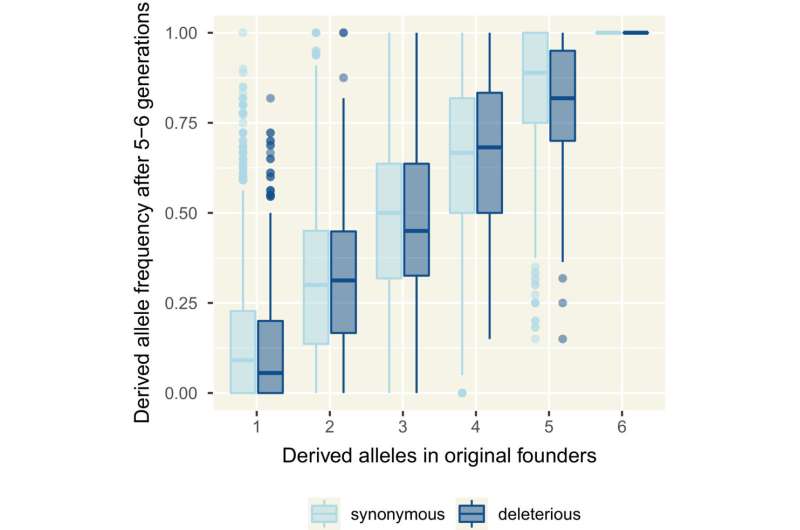Scandinavian wolves found to carry many harmful mutations

In a new scientific study, researchers at Uppsala University have shown that Scandinavian wolves carry around 100,000 harmful mutations in their genome. As long as the harmful mutations can be compensated by a healthy genetic variant, this does not need to pose a problem. However, as there has been a high level of inbreeding in the wolf population, the occurrence of double harmful variants has increased with each generation.
Mutations occur constantly in all organisms, and many of the changes can have a harmful effect on survival and reproduction. However, as there are two copies of each chromosome, individuals are often protected by one of the copies remaining intact. But in the case of inbreeding, it can happen that individuals carry two copies of a harmful mutation, which leads to a problem known as inbreeding depression.
For the first time, researchers at Uppsala University have investigated the occurrence of harmful mutations in 100 wolves in the Scandinavian wolf population and in a corresponding amount of Finnish and Russian wolves. They discovered that each individual has an average of approximately 100,000 harmful mutations across the entire genome (which in wolves consists of around 2.4 billion positions).
"We see a clear change across the generations. In the wolves that founded the Scandinavian population, most harmful mutations occur only in one copy, but with each generation of inbreeding, the proportion of mutations found in two copies increases," explains Linnéa Smeds, bioinformatician at the Department of Ecology and Genetics at Uppsala University and first author of the study.
The Scandinavian wolf population originates from only three individuals and is therefore highly inbred. The proportion of harmful mutations in two copies decreased when new wolves immigrated from Finland and reproduced, but after just a few more generations it increased once again. The researchers' conclusion is that more continuous immigration of wolves is required to reduce inbreeding and avoid harmful mutations being passed on from both parents.
"We don't know the exact function of all these mutations; the same applies even for humans who have been so thoroughly studied. That said, we can assume that the more harmful mutations an individual has, the worse it is—especially if they appear in two copies, as there is then no healthy variant to compensate for the harmful one," explains Smeds.
The research is published in the journal Molecular Ecology.
A number of defects have been observed in wolves in Scandinavia, for example deformed vertebrae and cryptorchidism (when both testicles fail to descend), and more such issues could occur in the future. Some of the mutations the researchers have studied could be causing these defects.
Using information from the entire genome in conservation biology is a relatively new practice and has created an entirely new field of research: conservation genomics.
More information: Linnéa Smeds et al, From high masked to high realized genetic load in inbred Scandinavian wolves, Molecular Ecology (2022). DOI: 10.1111/mec.16802
Journal information: Molecular Ecology
Provided by Uppsala University
















